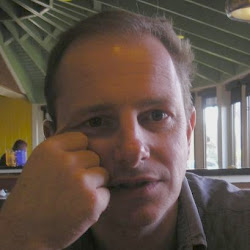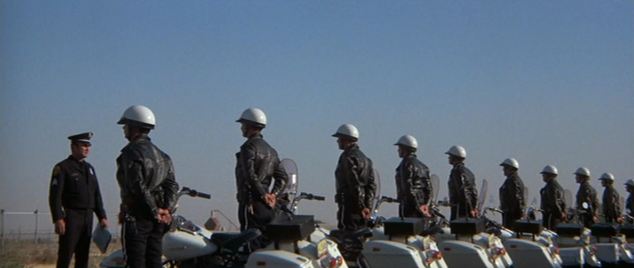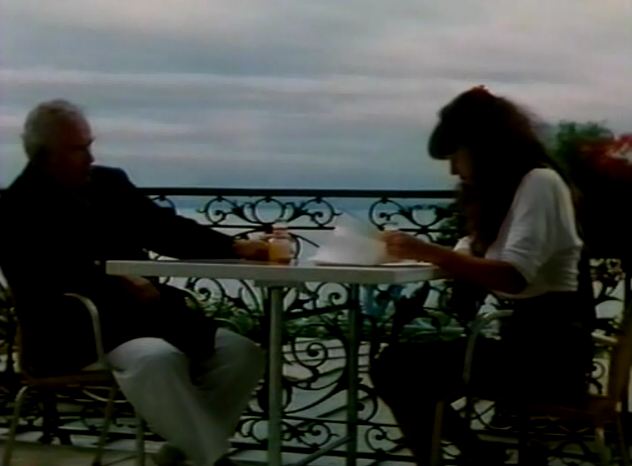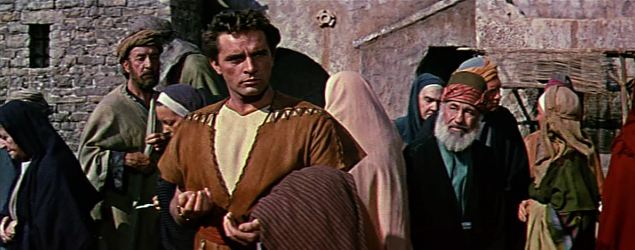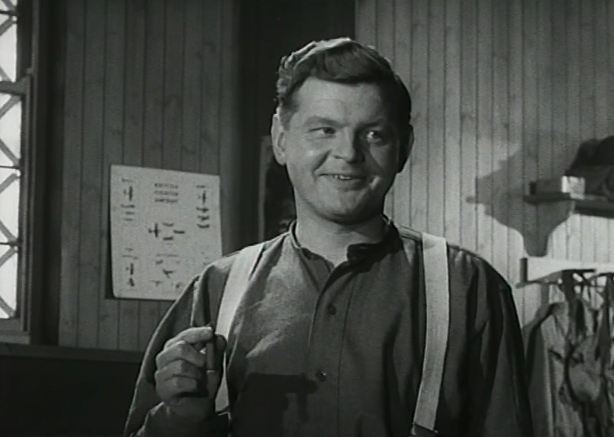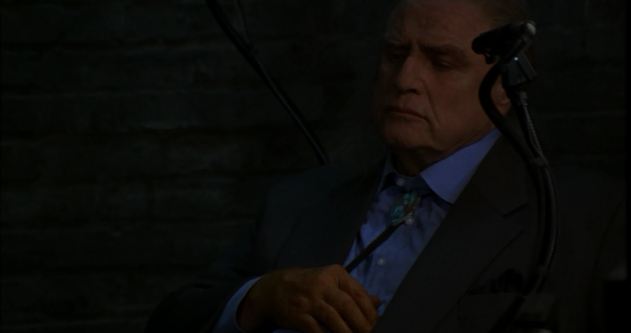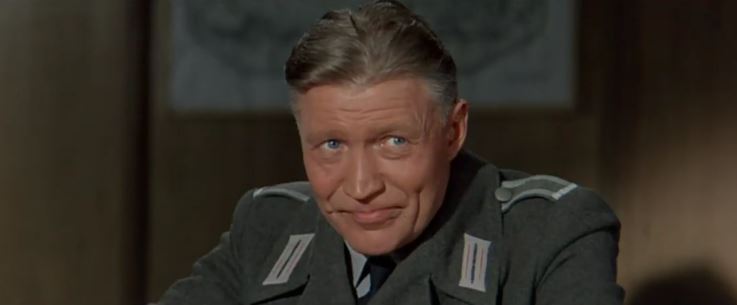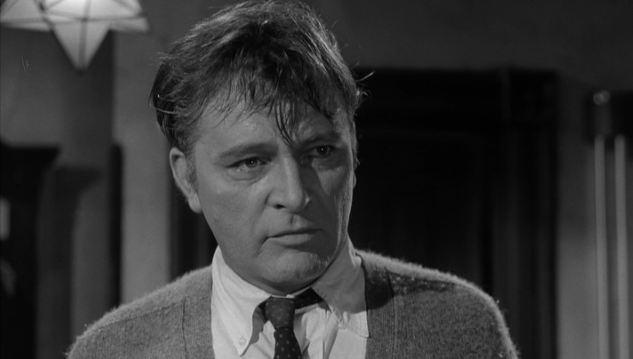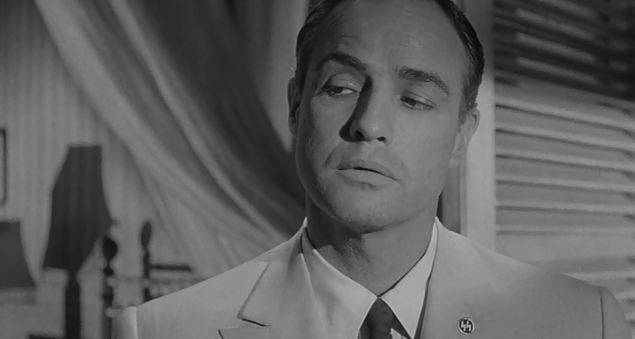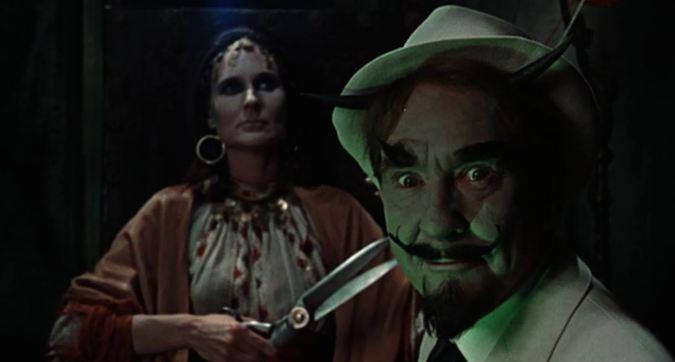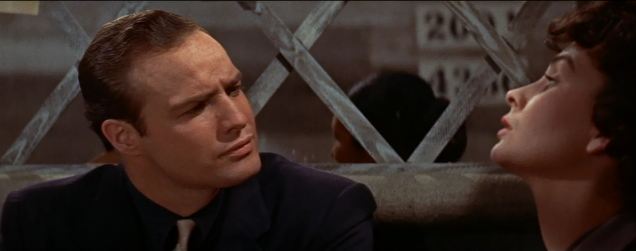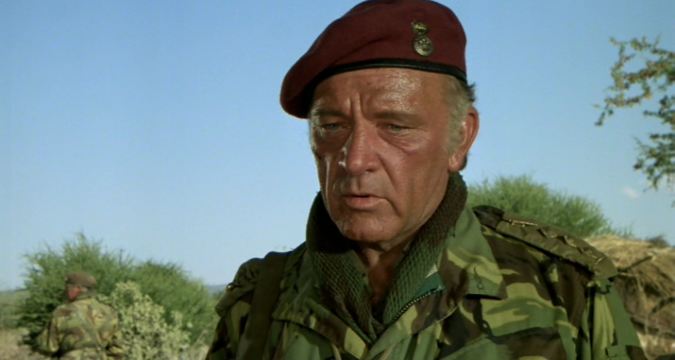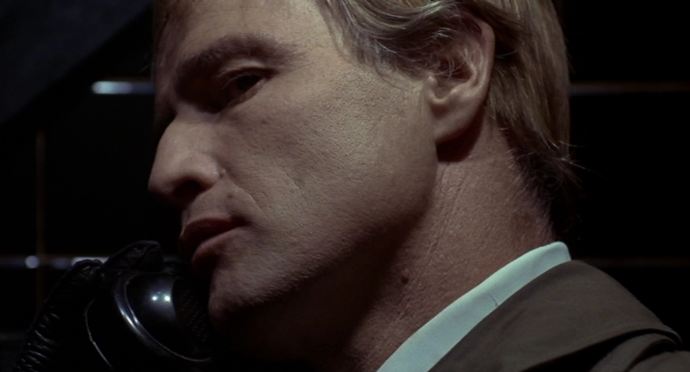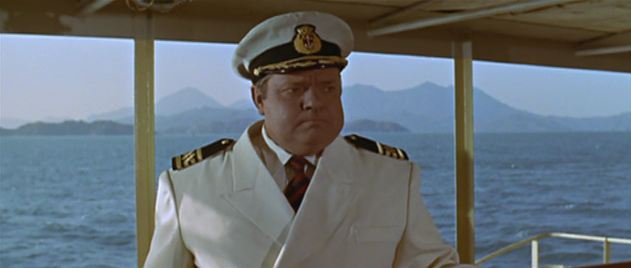The Robe (1953)
Cinema reached such a pitch in the 1950s that innovation became an end in itself. There is something special about the innovations in technology such as Cinemascope. Just seeing these credits roll, you can’t help but imagine yourself back into one of the cinemas and imagine the thrill of seeing everything so large, colourful and wide. The Robe was the first film to use the Cinemascope lens, as designed by the president of 20thCentury Fox, and it was used between 1953, when The Robe was released, to 1967, when superior technologies took over. It was wide, baby, wide.
The Brave (1997)
Later in his strange life, Marlon Brando hooked up with Johnny Depp and there are some amusing stories out there about the pair of them, which are all pretty much gossip, and which generally involve the older statesman giving the young buck good advice.
Hans Christian Blech in Morituri (1965)
Hans Christian Blech was born in February 1915 and became an actor but this career was interrupted by World War II, where he served in Russia, and was wounded and taken prisoner of war.
After the war he was a member of several ensemble theatre troupes, including the Schauspielhaus in Zurich and the Free People's Stage in Berlin, which ran successful socio-critical plays.
Marlon Brando in Morituri (1965)
Critics and studio officials alike have suggested that the reason the film Morituri failed to be a smash in 1965 was due to the fact that nobody understood the title, although I would beg to differ. If this had been the case after all, we’d have seen low, low audiences at Avatar, Quo Vadis, etc.
Guys and Dolls (1955)
From all accounts, Marlon Brando was hired as Sky Masterson for Guys and Dolls because he was the most bankable star in the world at the time of its production. This may be true and explain the strange casting against type, but it fails to explore Brando’s own relationship to and interest in the part.
Ferry to Hong Kong (1959)
There was a moment long ago when an entire movie genre was constructed out of the idea that viewers in dreary European cinemas, in dreary post-war days, could achieve a vicarious kind of tourism by being wowed by colourful scenes from overseas. These were neither comedies nor dramas, but featured elements of both, and in terms of plot, not much was required.
